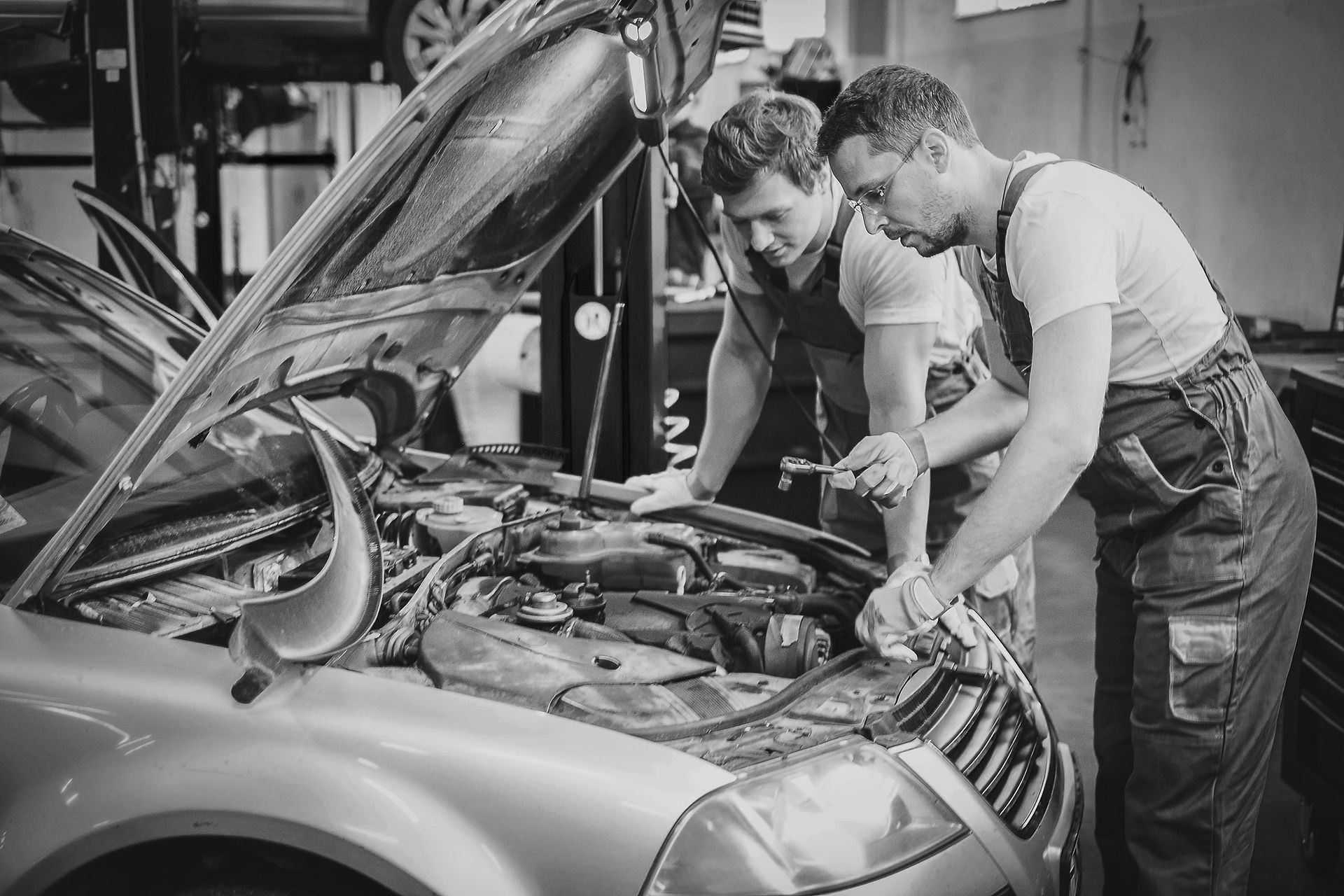
UNDERSTANDING TIRE BASICS
Simply put, a tire is a flexible container of compressed air. This air container support the vehicle's load; propels a vehicle forward, backward and side-to-side; stops the vehicle; and cushions the load from road imperfections.
Today's tires have between 19 and 25 different components. Tires are built from the inside out rather than the outside in. The heart of every tire is an inner liner. Its job is to give the tire shape and hold in air. Fabric belts are wrapped around the inner liner. The bead is fastened to the bottom of the fabric belts and holds the tire to the wheel.
On top of the fabric belts are steel belts. These belts have two jobs: They give the tire stability and make the tread pattern as flat as possible. (A flatter tread means more contact with the road.) The tire tread is on top of the belts. There are different tread patterns for different types of tires. The sidewall on the side of the tire gives it stiffness and ride characteristics. A taller, softer sidewall will absorb more bumps, while a shorter, stiffer sidewall will provide better cornering ability and sharper steering response.
On the sidewall of every passenger-car and light-truck tire is an alphanumeric code that describes the dimensions of the tire. For most tires, this code will start with a "P." Some may start with an "LT" to signify light truck. Some tires may have a "Max. Load" indication. When selecting new tires, it is important to make sure a tire's load rating is at least a high as the tire you are replacing.
CONSIDER HOW YOU DRIVE
Regardless of where you get new tires, there are a few things you should keep in mind:
-
Know the size and type of tire recommended by your owner's manual.
-
Determine your needs and priorities. What type of driving you will be doing? Do you prefer a soft ride, a firm ride, or a mix of the two?
-
Make sure you purchase a tire that is capable of supporting the load your vehicle might demand. Don't buy a passenger-car tire if you need a light-truck tire.
-
Don't buy more tire than you need. Consumers often overestimate their tire needs. In most cases, a quality all-season tire will suffice where a touring tire might be suggested.
-
Keep in mind that any tire selection is a balance between ride quality, noise suppression, fuel economy, wear, load capability and cost. It's the job of the tire-store expert and the consumer to select a tire that is the right balance of each.
-
An interesting trend in the automotive aftermarket industry is "plus sizing." It involves mounting bigger wheels and tires on a vehicle to enhance the look or improve handling.
Plus sizing usually increases cornering response and traction. Often these gains come at the expense of increased ride harshness. In addition, these larger wheels and tires are often not as durable as OEM wheels and tires.
A few items of note for consumers considering plus sizing:
-
Make sure that the tire and wheel are approved for use on your vehicle.
-
Make sure that the replacement tire has the same load-carrying capacity.
-
The new wheel and tire combination should be within 3 percent +/- the original tire diameter.
-
Make sure that a new tire placard is installed to inform future owners of the correct tire pressure.
